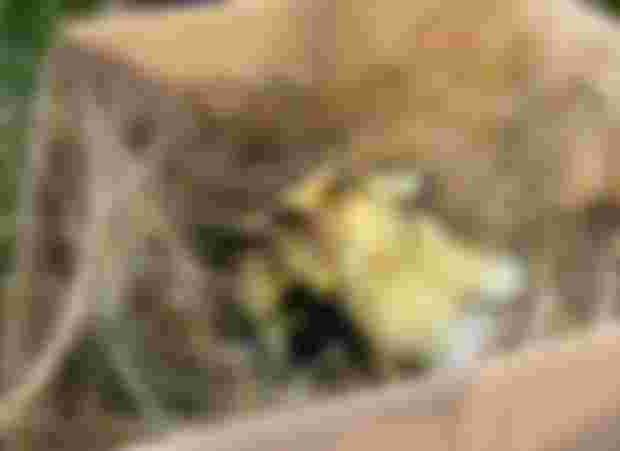How to make a nest for ducks
Have a nice and kind second summer morning, everyone!
Have a wonderful and
Charming mood!
Great, wonderful and
positive emotions!
Always wonderful and
Amazing smiles!
More health, happiness,
Love and joy!
Positive and good luck in the flying
rhythm of our life!
Today I will continue the theme of poultry farming, namely ducks.
Nests for ducks - one of the paramount attributes of house design. For birds to have a desire to lay eggs in homemade nests, and not wherever you want, you must make them as comfortable as possible. Of course it is necessary to spend some time to accustom ducks to nesting places.
Make nests for ducks with their own hands is more difficult than it seems at first glance. You can take a long time to look at the photos and try to reproduce what you see, but without knowing the basic rules, you will not be able to make a comfortable nest. Requirements for the nest:
A duck's nest should have a roof, so that the bird understands that it is not in danger. The nest should be in a secluded place so that the hen will feel more comfortable and safe, a threshold in the nest must be made, otherwise the egg will simply roll out of the box and will be broken.

Before you start work, you need to decide where you want to put the nest. Depending on the location, the dimensions will be calculated. It is strictly forbidden to put the nest in places where moisture accumulates. Also, you should not install them immediately near the entrance. The ideal location is by the far wall.
Even in the daytime, where the females are laying, the illumination should be dimmed. If the barn has too many window openings and the room is bright, it is necessary to cover some of them. The egg laying performance of ducks will also be affected by sudden noise. Where there is constant noise, the bird does not feel safe.
In order to determine the best location for nesting sites, it is necessary to have a clear idea of how many ducks are planned to be kept. It is better to allocate a separate nest for each individual. If there are not enough nests, the duck can find another place and will lay eggs there. If the ducks start laying in another place, it will be quite difficult to get them accustomed to the nest.
Nests should be placed so that the owner has free access to them. The box will have to be constantly cleaned and collected eggs, so it is so important to provide all the comfortable conditions. It is important to remember that the bird will only lay in the safest place.
It is not enough to properly design the nest, it is still necessary to arrange it so that the duck wants to sit inside. The bottom of the product made with your own hands should be covered with warm material: hay or straw.
The flooring should be quite thick. It is worth considering that the softer the nest, the more likely the duck will start to lay in it. Plus thick bedding minimizes the risk of damage to the testicles. Most ducks try to bury their eggs because they naturally nest on the ground. If the bedding is thin, the egg will simply burst under the pressure of the duck's body and wooden bottom.
It is not difficult to build a nest for ducks with your own hands. Putting the duck in it - that is the difficulty. There are cases when the owners try to put ducks in new boxes, but they prefer the old basket, so this attribute is simply transformed into a container for laying eggs by putting a large layer of straw inside. The basket is brought into the barn and placed in a secluded place.
Domestic ducks are capable of choosing their own nesting location. Sometimes you just need to take a good look at where this or that individual sits and in that corner to put a container for it.
It is not necessary to install the nest boxes in a row in close proximity to each other. This may cause a decrease in egg production.
Each individual clutch should be in a quiet, secluded corner. This arrangement will bring the bird as close to natural conditions as possible. The side on which the hole was made should face the wall, not the entrance, then the duck will feel that no one sees it when it climbs into the box. The first few times you will have to put the birds in the containers yourself.
Under no circumstances should you collect produce while all the females are in the barn. Once they see their testicles being taken away, they may stop laying in their nests and find more secluded corners. Egg collection should be done regularly at the same time, after all the females have gone outside.

In some cases, once a homemade nest is installed in the house, the ducks understand what it is for and start climbing in by themselves, but more often than not they have no idea how to handle it. In winter cold females do not breed, nevertheless it is necessary to install the nests in the autumn period. For a long time the birds will get used to the houses and will pick up a separate one for themselves.
In order that the birds as soon as possible understood what the nests are for, a clay egg should be left there. You can accustom the individual to the nest by closing the duck in a room with a box for several days. This method is quite effective.
House ducks are birds that prefer to sit to lay their eggs all alone where no other yard dweller can reach them. Do not keep several females in one nest, even if separated by partitions. The optimal number is one nest per individual.
Musk ducks are completely intolerant of increased humidity, even though they are waterfowl. In winter one should not economize on heaters, otherwise one can lose half of the flock. In summer, when it is too hot, you should, on the contrary, spray the walls with water.
Domestic ducks are quite picky about habitat conditions. In order to get the maximum number of eggs and not to collect them all over the site, it is necessary to equip bird houses with nests. It is not always the case that the female wants to lay eggs in the nest.
In order to make the birds want to lay eggs in the nests, you need to make the boxes themselves as comfortable as possible and put them in remote locations. However, the location is a moot point. It is recommended to see where the duck lands and place the nest there. Most farmers unanimously say that the best place is in the corner of the barn, but if a particular duck decides to breed near the threshold, that is where the nest should be placed. Also, if the duck likes the basket better, the thing should be reclassified as a nest and placed in the bird house.
The parameters of the nest will depend on the size of the adult female and the area of the poultry house. The bird house should be quite spacious. In winter, there should be a thick layer of straw or hay on the floor to prevent birds from freezing their feet. The nest should also have the thickest possible bedding so that when you try to bury the egg it will not be damaged. It is better to start accustoming the ducklings to nests in advance, in the autumn, by installing crates in the poultry house.
Domestic ducks should not in any case see how the owner takes their eggs from the box, because then they will have to look for another place for laying eggs, so it is necessary to carry out all manipulations when the flock is on a walk. Among other things, it is necessary to make sure that the wood on the crate is carefully treated. It is not advisable to paint; it is better simply to use sandpaper. Ducks do not like loud noises and should be left alone during incubation.
The box should look like a house with a roof and a threshold, so that the ducks will want to incubate in them. A special manhole is made on the side of the structure. In the arrangement inside the barn, it is necessary to install it so that this manhole looks at the wall. This will give the duck a sense of privacy.


I so love ducks. The only thing is I don't think I'd have the time to take care of them if I ever get them since I'm mostly busy. You're the boss- well done! I look forward to eating some roast Duck when they're grown.